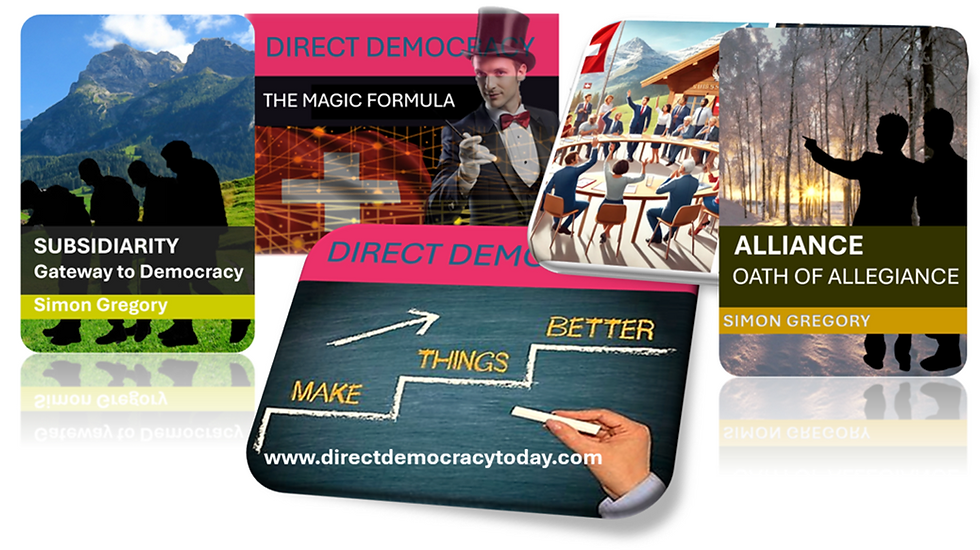Rally | Reciprocity | Reformation
- 5thavenueartist
- May 14, 2024
- 3 min read
Fed up with the same old adversarial party nonsense?
The Key Elements of Transition to Direct Democracy
In the several Western European nations, the political landscape is often dominated by a two-party system, traditionally comprised of right and left. Despite appearing as distinct entities, some argue that these parties effectively form a "uniparty," sharing similar policies and ideologies on many issues.
Rallying Together
In the face of this entrenched political structure, a coalition of independents seeking to reform representative democracy and add elements of Direct Democracy faces significant challenges but could potentially leverage their unity in several practical and pragmatic ways.
Decide on a Fundamental Goal
A coalition aiming to achieve a common end does not necessarily need to agree on every single detail or issue. In fact, it's quite common for coalition members to have differing perspectives on various matters. What's crucial is that they share a fundamental goal or objective and are willing to work together to advance that goal, despite their differences.
In practical terms, coalition members may prioritize certain key issues or areas of agreement while allowing for flexibility or compromise on others. They may also adopt a consensus-building approach, where decisions are made collectively and everyone's input is considered, even if consensus on every point isn't reached.
Direct Democracy in the Making
In fact, this is an excellent way of self tutoring when it comes to eventually developing systems of Direct Democracy. In a Direct Democracy like Switzerland its seven Federal Councillors are drawn from different parties.
Grassroots Mobilisation
Firstly, the coalition could focus on grassroots mobilisation and community organizing to build widespread support for their reform agenda. By engaging directly with constituents and local communities, independents can demonstrate the popular demand for change and pressure established parties to address their concerns.
District Targeting
Additionally, the coalition could strategically target key electoral districts where independents have a strong chance of winning seats. By concentrating their efforts and resources in these areas, they can maximize their impact and potentially secure enough seats in parliament to influence legislative outcomes.
Collaboration with Multiple Groups interested in Reform
Furthermore, the coalition could collaborate with existing political movements, advocacy groups, and civil society organizations that share similar reform goals. By forming strategic alliances and pooling resources, independents can amplify their message and increase their influence within the political landscape.
Policy Proposals that Resonate
Moreover, the coalition could prioritize specific policy proposals that resonate with a broad cross-section of the population, such as electoral reform, campaign finance reform, and greater transparency and accountability in government. By framing their agenda in terms of enhancing democracy and promoting fairness and equality, independents can appeal to a wide range of voters and build momentum for change.
Mobilising Support
Additionally, the coalition could utilize social media and digital platforms to effectively communicate their message and mobilise support. By harnessing the power of online activism and digital organizing, independents can reach a larger audience and mobilise grassroots support for their reform agenda.
Ultimately, the success of a coalition of independents seeking to reform representative democracy in any country will depend on their ability to effectively: Mobilise support Build strategic alliances Articulate a compelling vision for change By leveraging their unity and adopting practical and pragmatic strategies, independents can challenge the dominance of the two-party system and drive meaningful reform within the political landscape.




Comments